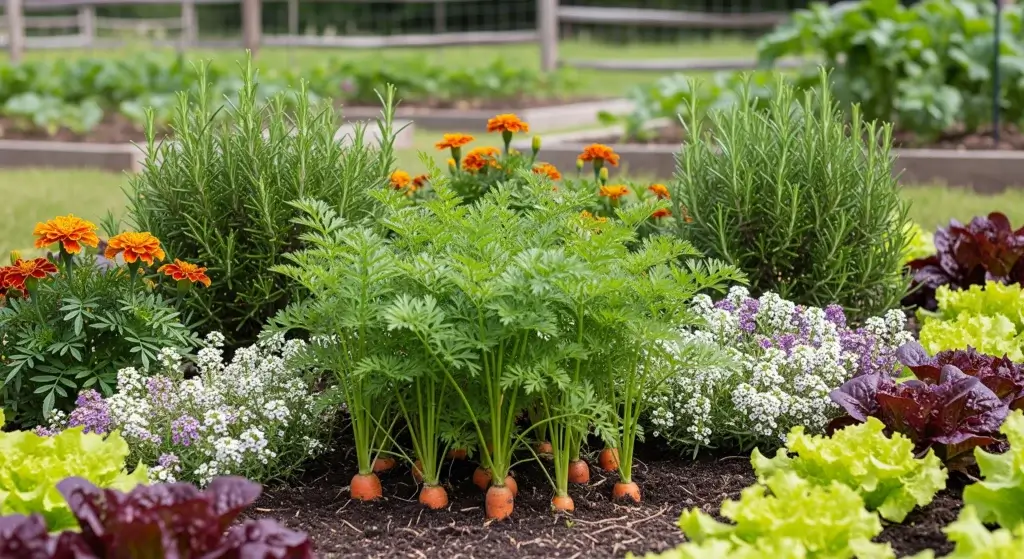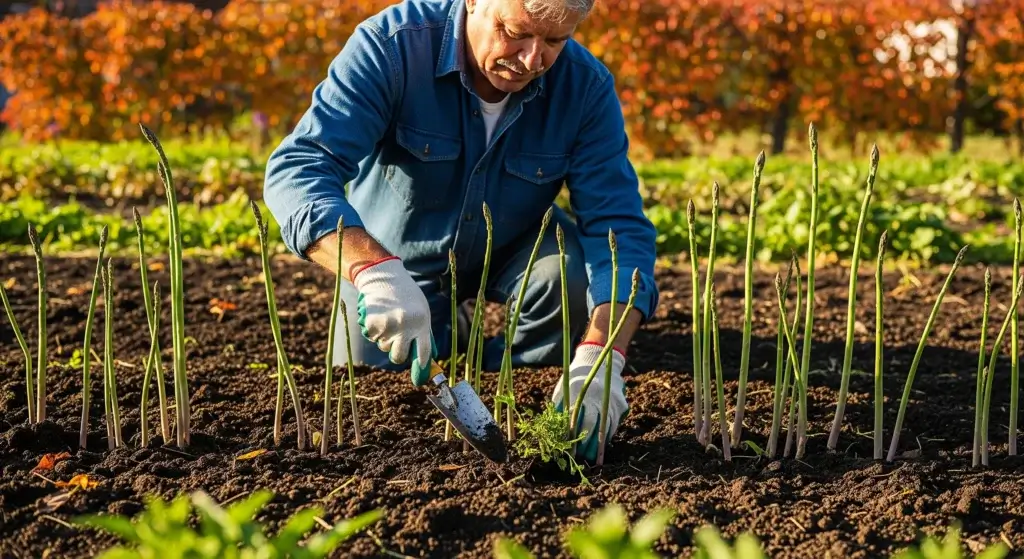
In winter, indoor plants need special care due to the drastic drop in temperature, decreased sunlight, and lower humidity levels.
Many plants enter a dormant phase, where they slow down growth to conserve energy.
Because of these changes, plants generally require less water during this time.
However, improper watering can lead to serious issues, such as root rot or dehydration.
To maintain healthy indoor plants throughout the winter, it’s essential to understand the changes in their needs and adjust your watering schedule accordingly.
Over the next few sections, we’ll dive into the challenges of winter watering and provide actionable tips to keep your plants happy and healthy.
Challenges of Watering Indoor Plants in Winter
Watering indoor plants during winter comes with its own set of challenges, quite different from those faced in the warmer months.
Here’s a breakdown of the main issues and how they affect your plants:
Reduced light
In winter, days are shorter and the sunlight that does reach your plants is weaker.
This means that plants aren’t photosynthesizing as much, which reduces their water needs.
Because they’re not growing as quickly, they don’t use water as rapidly as they do during the longer, sunnier days of summer.
As a result, you’ll need to water less frequently.
- Read also: A Comprehensive Guide: Hanging Plant Watering System
- Read also: Hydration Innovation: DIY Plant Watering Bottle Ideas
Lower temperatures
Indoor temperatures can be inconsistent in winter, especially if heating systems are not uniform.
Cold temperatures can slow down a plant’s metabolism, meaning the plant absorbs and uses water more slowly.
With this slower metabolic rate, plants generally need less water during the winter months.
Decreased humidity
Winter air is often drier because indoor heating systems lower the humidity levels.
This dry air can lead to faster evaporation of moisture from the soil, which might make it seem like your plants need more water.
However, many indoor plants also require higher humidity to thrive, so while they might need less water, they may still suffer from dry air.
You might need to increase humidity around your plants using a humidifier or by placing a tray of water near the plants.
Dormancy
Many indoor plants go into a state of dormancy during winter.
This is a period where growth slows down significantly, and their water needs drop as a result.
While they’re resting, they don’t need as much water as they do when they’re actively growing in the spring or summer.
It’s important to reduce watering during this time to prevent overwatering, which can lead to root rot and other issues.
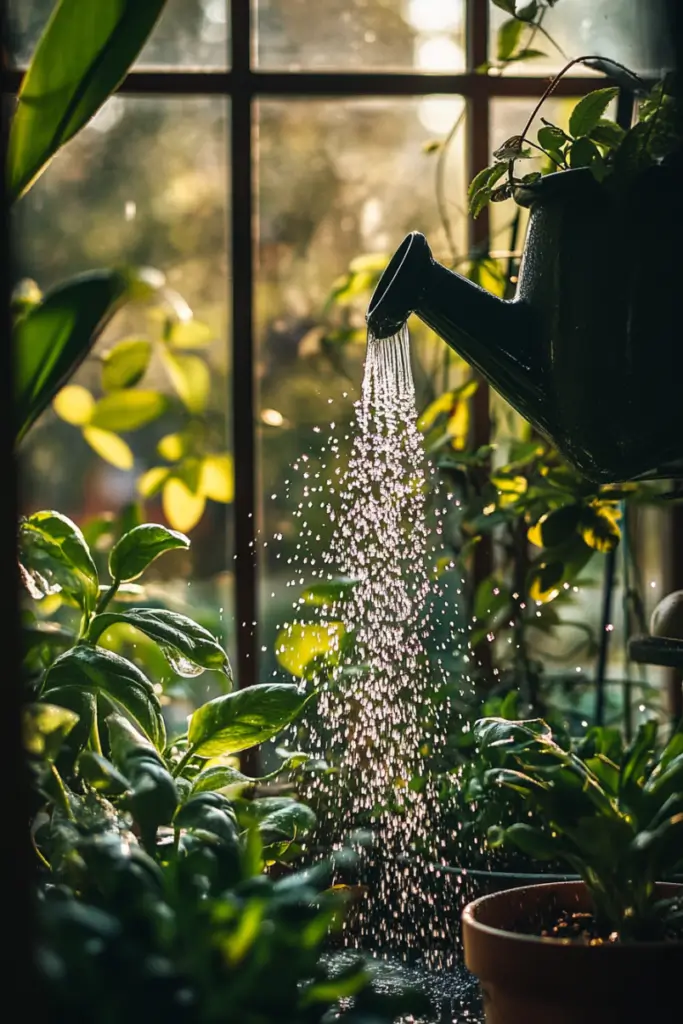
Watering Tips for Winter
Caring for indoor plants in winter requires a balanced approach.
Here are key tips to help you water plants effectively during the colder months:
Frequency
During winter, plants require less water than they do in warmer seasons.
Most houseplants can be watered once every two to three weeks, depending on the species and environmental conditions.
It’s best to check the soil before watering. Insert your finger about an inch into the soil—if it’s dry at that depth, it’s time to water.
Plants like succulents and cacti need even less frequent watering during winter due to their ability to store water.
Overwatering these plants can lead to root rot, which is a common issue when watering is not adjusted seasonally.
Water quality
Using the right water is crucial for your plants’ health, especially during winter when they’re more vulnerable.
Tap water can contain chlorine and fluoride, which may harm sensitive plants over time.
It’s best to use room-temperature water, ideally rainwater or distilled water, to avoid shocking your plants with cold water.
According to research published in the Journal of Plant Science (2020), using room-temperature water helps maintain the plant’s internal balance and prevents damage to its roots during the dormant winter months.
Watering Methods
When watering indoor plants, especially in winter, it’s important to water thoroughly but infrequently.
Water the base of the plant until the excess starts to drain from the bottom of the pot.
Avoid watering the leaves, as the cold temperatures make them more susceptible to fungal growth.
Bottom-watering is another effective technique.
This method involves placing the plant’s pot in a dish of water and allowing it to absorb moisture from the drainage holes.
It prevents overwatering while ensuring that the plant gets enough moisture to the roots.
Drainage
Good drainage is essential in winter, as the reduced light and cooler conditions slow down evaporation.
If water accumulates in the pot, it can lead to waterlogged soil and root rot.
Ensure your pots have drainage holes and use a well-draining soil mix, especially for plants like succulents that are prone to root rot.
A layer of pebbles at the bottom of the pot can also help improve drainage and prevent roots from sitting in water.
Humidity
Many plants, especially tropical varieties like ferns and orchids, thrive in high-humidity environments.
During winter, indoor heating can significantly reduce humidity levels, leading to dry soil and wilting leaves.
To increase humidity, you can:
- Place plants on a tray filled with water and pebbles.
- Group plants together to create a more humid microenvironment.
- Use a humidifier to maintain humidity levels between 40-60%.
Maintaining adequate humidity is crucial for keeping plants healthy during winter months when air is much drier.
Dormancy
During winter, many indoor plants enter a period of dormancy where they conserve energy and require less water.
Fiddle leaf figs, peace lilies, and snake plants, for example, will slow down growth during this time.
It’s essential to adjust your watering schedule and reduce the amount of water you give these plants to avoid overwatering.
Dormancy is a natural process, and forcing growth through excess watering or fertilization can weaken the plant in the long run.
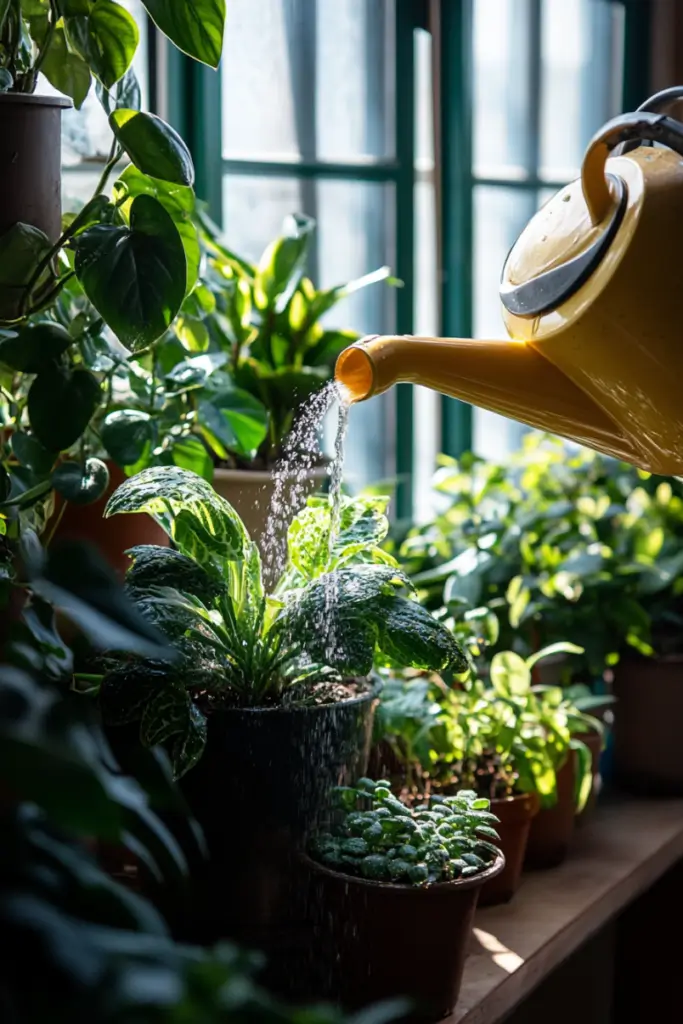
Common Winter Watering Mistakes
Winter brings unique challenges for watering indoor plants, and it’s easy to make mistakes.
Here are some common pitfalls to watch out for:
Overwatering
In winter, plants use less water because they’re growing more slowly.
However, it’s easy to overwater if you stick to your summer routine.
Too much water can cause root rot, a serious issue that prevents the plant from absorbing nutrients properly.
Make sure to adjust your watering schedule to avoid this problem.
Underwatering
Conversely, underwatering can also be a problem, especially in dry, heated indoor environments.
Some plants might still need more water than others, even in winter.
Check the soil regularly and watch for signs of dehydration, such as wilting leaves or dry edges.
Using cold water
Watering your plants with cold water during winter can shock their roots, particularly if your home is already cooler than usual.
Always use water that is at room temperature or slightly warmer to keep your plants comfortable and avoid stressing them.
Ignoring humidity
Winter air is often dry due to indoor heating, which can be tough on plants that thrive in higher humidity, like tropical varieties.
Without enough moisture in the air, these plants can suffer from dry leaves and wilting.
Consider using a humidifier or placing a tray of water near your plants to boost humidity levels.
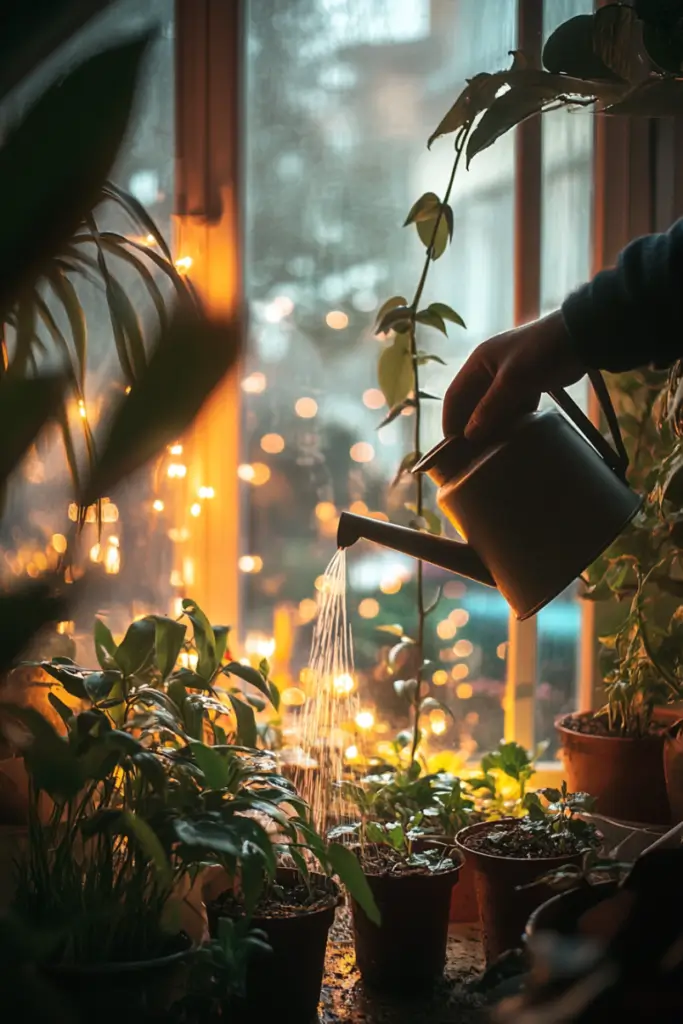
- Read also: Nurturing Greenery: A Guide to DIY Plant Watering Globes
- Read also: Nurturing Greenery: A DIY Potted Plant Watering System Guide
Final Thoughts
Watering indoor plants during winter requires a mindful approach.
By adjusting your watering frequency, improving drainage, and paying attention to humidity and dormancy, you can help your plants thrive even in the colder months.
Avoid common mistakes like overwatering or using cold water and remember that each plant has unique needs depending on its type and environment.
Proper care during winter will set your plants up for a strong recovery when spring returns, allowing them to grow healthier and more vibrant than ever before.
FAQs
Most indoor plants only need watering every two to three weeks during winter. Check the soil before watering to ensure it’s dry about an inch deep.
Tap water is generally okay for most plants, but distilled or rainwater is ideal, especially for sensitive plants. Always use room-temperature water to avoid shocking the roots.
Yellowing leaves can be a sign of overwatering. Reduce watering frequency during winter as plants enter a dormant state and require less water.
Most indoor plants do not need fertilizer during winter since they’re not actively growing. Wait until spring when they resume their growth cycle.
Using a humidifier, grouping plants together, or placing them on a tray with water and pebbles can help increase humidity levels for your plants.


